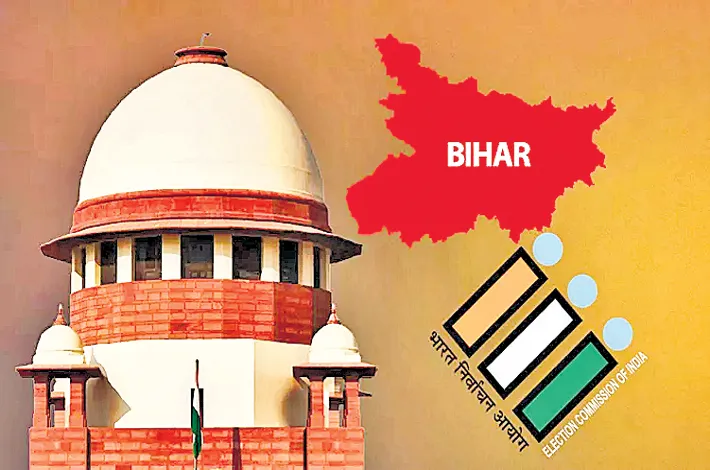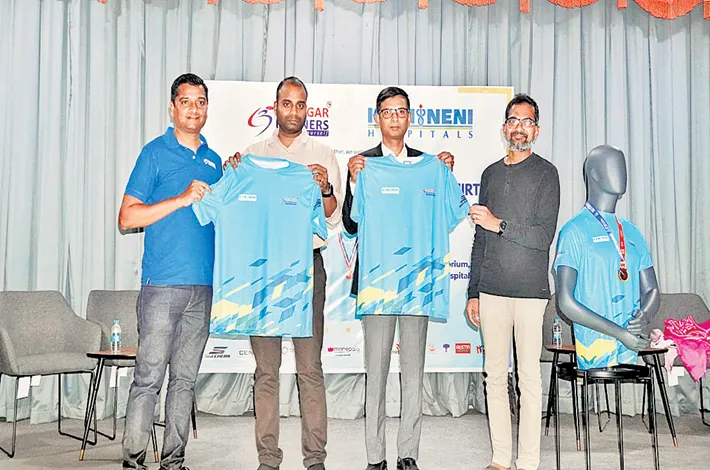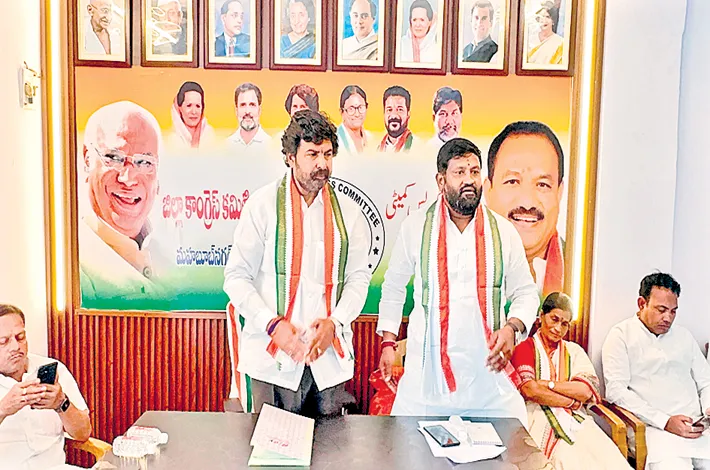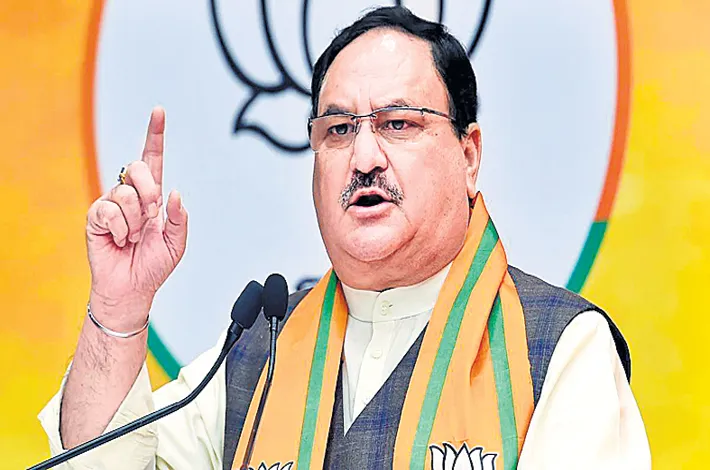Democracy wins
15-08-2025 12:00:00 AM

■ Supreme Court Orders ECI to Enhance Transparency
■ Asks ECI to publish 65 L voters deleted, reasons by Tuesday
■ Instructs ECI to accept Aadhar card as ID for voting
metro india news I hyderabad
In a landmark directive aimed at bolstering electoral transparency, repose confidence in the entire electoral process, the Supreme Court has mandated the Election Commission of India (ECI) to publish the names of approximately 65 lakh voters removed from Bihar’s draft electoral roll following the Special Intensive Revision (SIR) exercise.
The court, led by Justices Surya Kant and Joymalya Bagchi, has further instructed the ECI to specify the reasons for these deletions—such as death, migration, or duplicate registrations—and to make this information publicly accessible on the websites of District Electoral Officers and the Chief Electoral Officer of Bihar by August 19. Additionally, the court has directed the ECI to accept Aadhaar cards as valid documentation for voters seeking reinstatement, a move that overturns the ECI’s earlier stance against recognizing Aadhaar as proof of eligibility. This ruling has been hailed as a significant step toward ensuring voter confidence and electoral integrity ahead of Bihar’s upcoming assembly elections.
The Supreme Court’s order comes in response to a series of petitions, led by the Association for Democratic Reforms (ADR) and other stakeholders, challenging the ECI’s handling of the SIR process in Bihar. The SIR, initiated on June 24 aimed to cleanse the electoral rolls by removing ineligible voters and ensuring the inclusion of all eligible ones. However, the exclusion of over 65 lakh names from the draft electoral roll, published on August 1, sparked widespread controversy, with allegations of opacity and potential disenfranchisement. The opposition, including parties like the Rashtriya Janata Dal (RJD) and the Dravida Munnetra Kazhagam (DMK), claimed that the process could disproportionately affect marginalized communities and deprive eligible voters of their constitutional rights.
Background and Recent Developments
The controversy surrounding Bihar’s SIR began when the ECI announced the revision exercise just months before the state’s assembly elections, scheduled for later in 2025. The draft roll, which enlisted 7.24 crore voters, excluded 65 lakh names, citing reasons such as death (22.34 lakh), permanent migration (36.28 lakh), and duplicate registrations (7.01 lakh). Critics, including senior advocates Kapil Sibal, Abhishek Manu Singhvi, and Prashant Bhushan, argued that the ECI failed to provide transparent, constituency-wise data on the deleted voters, undermining public trust. The ADR, in its petition, alleged that the ECI had deliberately omitted a column titled “Uncollectable Reason” from the final draft roll, which had been present in an earlier version shared with some political parties on July 20, 2025. This omission, they claimed, left voters unaware of why their names were removed, limiting their ability to seek redress.
On July 10 the Supreme Court had permitted the ECI to proceed with the SIR but emphasized the need for “en masse inclusion” rather than “en masse exclusion.” The court urged the ECI to consider Aadhaar, Electoral Photo Identity Cards (EPIC), and ration cards as valid documents for verification, despite the ECI’s initial resistance, which was based on the argument that Aadhaar does not establish citizenship. The ECI’s affidavit clarified that Aadhaar cards carry a statutory disclaimer stating they are not proof of citizenship, a stance that drew criticism for potentially excluding genuine voters who rely on Aadhaar as a primary identity document.
By July 28, the Supreme Court reiterated its stance against mass exclusions, with Justice Surya Kant emphasizing that the ECI must ensure transparency and accessibility. The court’s concern intensified when, on July 29, it was informed that 65 lakh voters were likely to be excluded. The bench warned that it would intervene if evidence of mass disenfranchisement emerged, even asking petitioners to produce just 15 living individuals who had been wrongly excluded.
‘On August 6, the court issued a notice to the ECI following ADR’s application, which highlighted the lack of a public list detailing the deleted voters and the reasons for their exclusion. Advocate Prashant Bhushan argued that the ECI’s Standard Operating Procedure (SOP) required sharing deletion lists with political parties, but the absence of detailed reasons and public disclosure violated transparency norms. The court directed the ECI to respond by August 9, seeking clarification on whether the deleted voters’ list was shared with political parties and whether proper procedures were followed.
The ECI, in its affidavit filed on August 9, defended the SIR, asserting that it was a lawful exercise aimed at ensuring the “purity of elections” by removing ineligible voters. The commission assured the court that no eligible voter would be deleted without prior notice, an opportunity for a hearing, and a reasoned order. It also outlined measures such as large-scale awareness campaigns, multiple visits by Booth Level Officers (BLOs), and a two-tier appeal system to protect voters’ rights. However, the ECI maintained that it was not statutorily obligated to publish a separate list of excluded voters or provide individualized reasons for deletions, a position that drew sharp criticism from the petitioners.
The August 14 Ruling and Its Implications
The Supreme Court’s August 14 directive marks a pivotal moment in the ongoing dispute. By ordering the ECI to upload the list of 65 lakh deleted voters, along with specific reasons for their exclusion, the court has addressed the core issue of transparency. The bench emphasized that this disclosure would “boost voter confidence” and allow affected individuals to take remedial measures. The court further mandated that the list be searchable by EPIC numbers and publicized through vernacular newspapers, TV, radio, and social media platforms. This ensures that voters, particularly those in rural areas, can access the information without relying on political intermediaries.
The inclusion of Aadhaar as an acceptable document is another significant development. The court noted that while Aadhaar is not listed among the ECI’s 11 specified documents, its widespread use makes it a practical choice for voters seeking reinstatement. This directive aligns with the court’s earlier observations on July 10, reinforcing the need for a “layman-friendly” approach to voter inclusion. The ECI has been instructed to complete these actions by August 19 and submit a compliance report by August 22, with further hearings scheduled for August 22.
Broader Context and Political Reactions
The Bihar SIR controversy has sparked intense political debate, with opposition parties alleging that the exercise could disproportionately affect marginalized groups, including minorities and migrant workers. The DMK, in a resolution, accused the ECI of aiding the ruling Bharatiya Janata Party (BJP) by removing 65 lakh voters, a claim that underscores the high stakes of the upcoming elections. The ECI, however, has maintained that the SIR is a routine exercise to maintain electoral integrity, citing similar revisions planned across India.
The Supreme Court’s intervention has been widely praised by civil society groups like the ADR, which described the ruling as a victory for electoral transparency. Political analysts suggest that the court’s emphasis on public disclosure and Aadhaar inclusion could set a precedent for future electoral revisions, particularly in states with complex demographic and migration patterns like Bihar.
As the September 30 deadline for the final electoral roll approaches, the ECI faces the challenge of balancing procedural rigor with inclusivity. The court’s directive not only addresses immediate concerns in Bihar but also reinforces the principle that transparency is the cornerstone of a fair electoral process. With the nation watching, the ECI’s compliance with these orders will be crucial in restoring public trust and ensuring that no eligible voter is left behind








